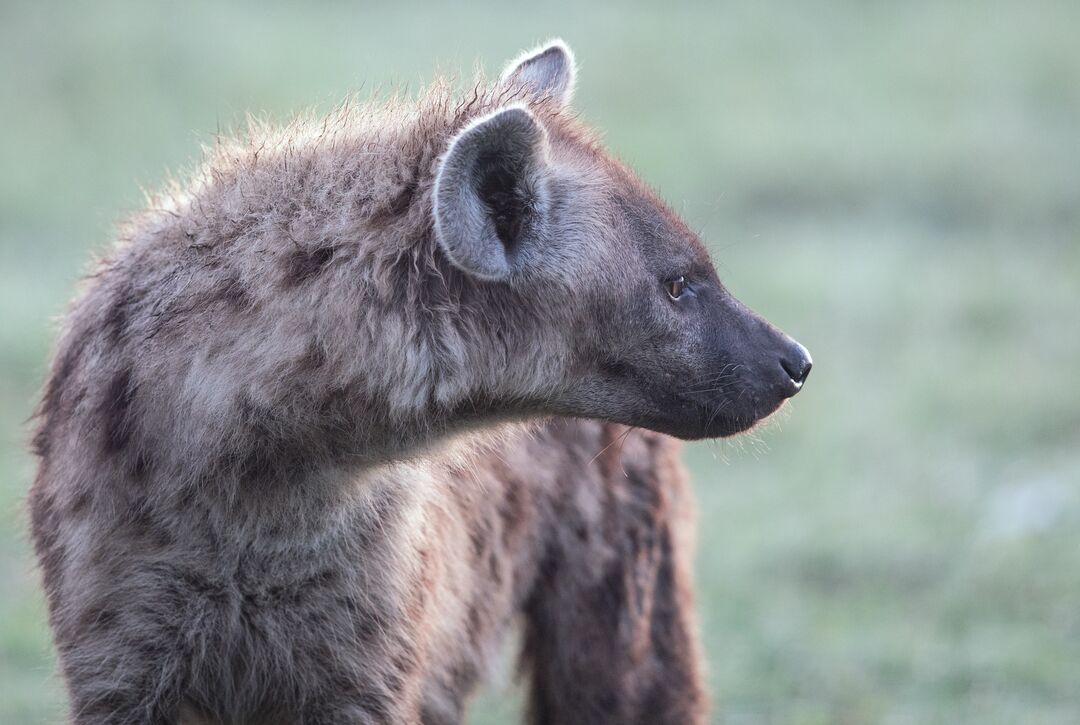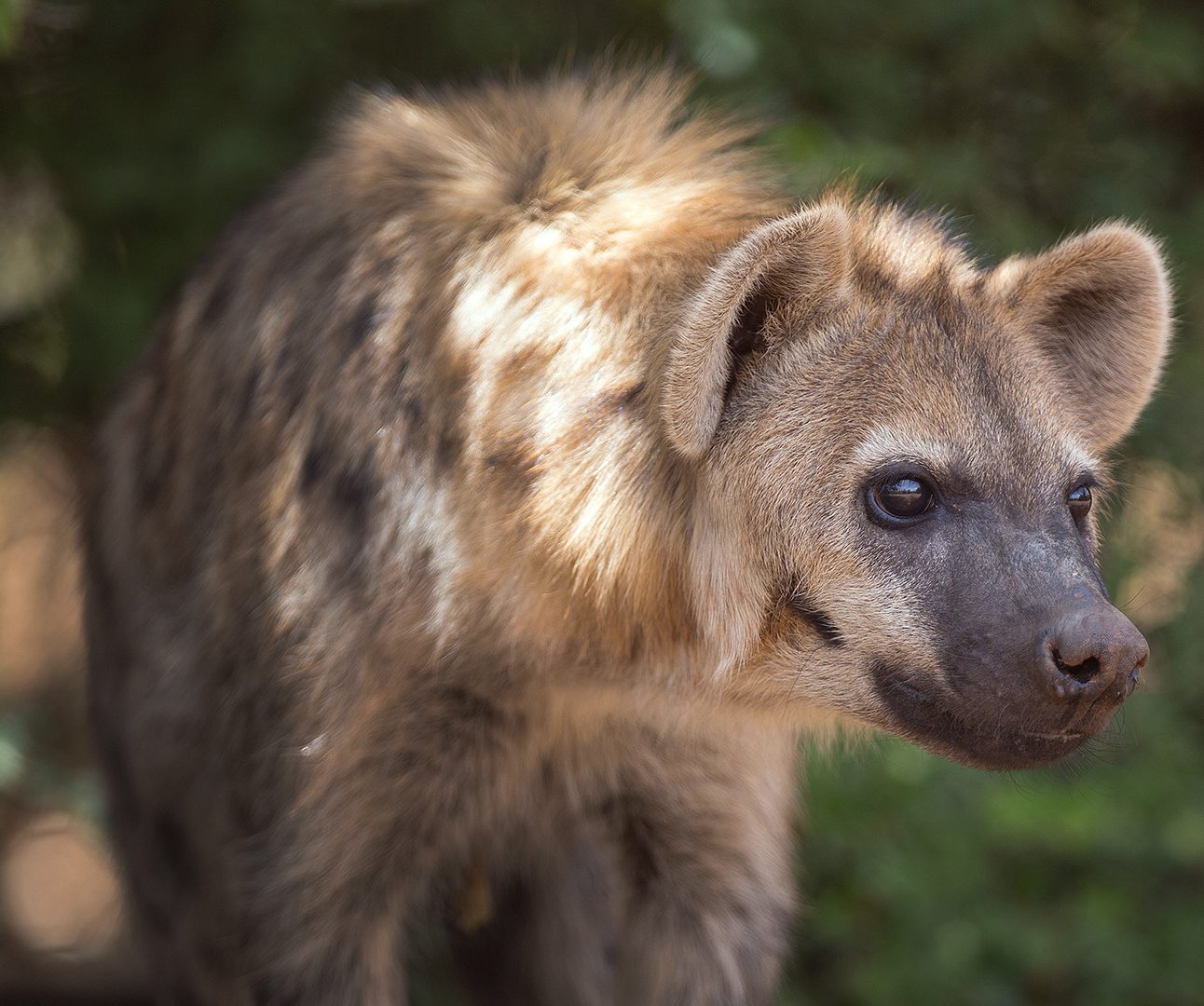
IUCN STATUS
Least Concern
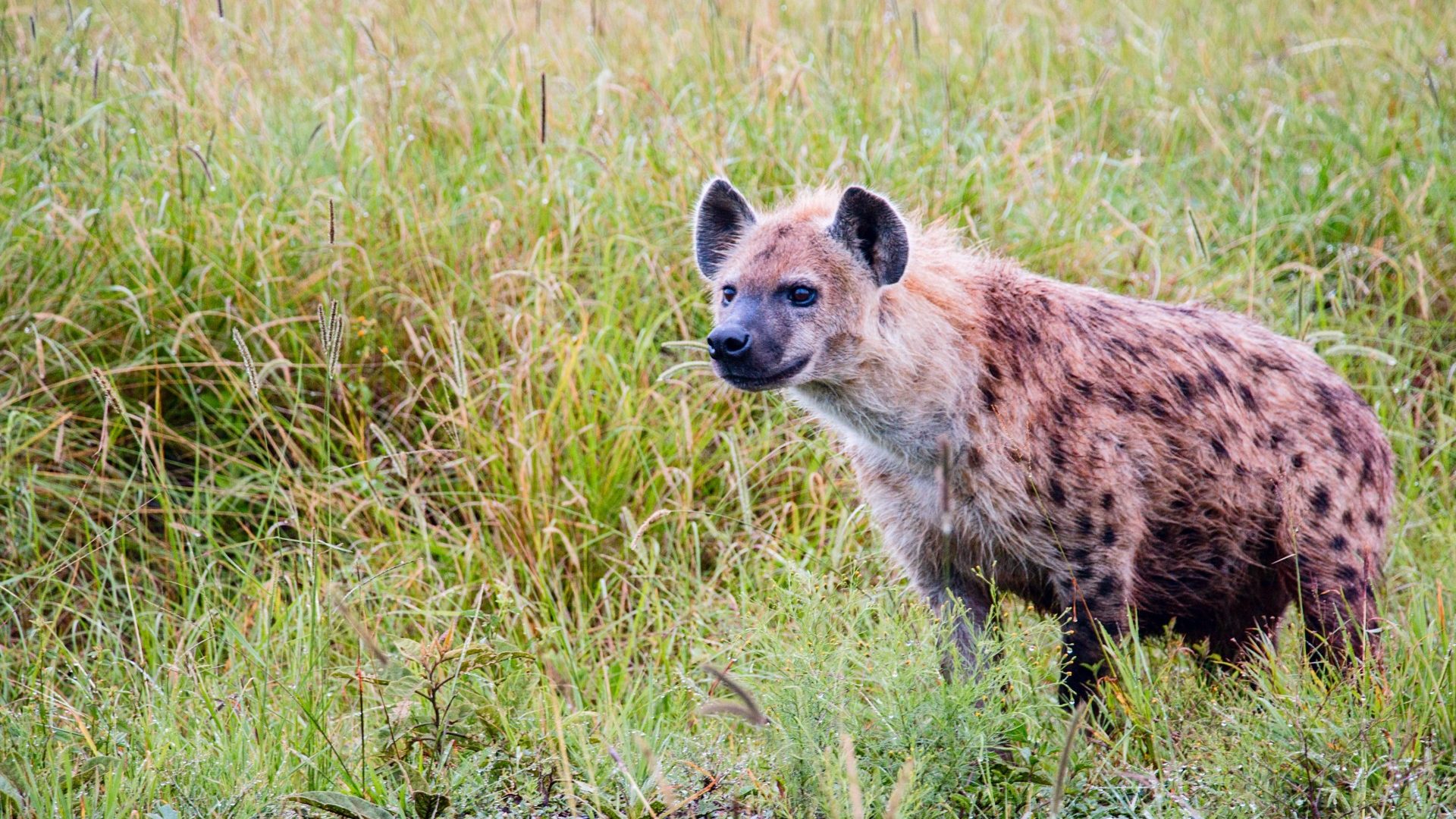
Crocuta crocuta
There is some evidence that hyenas appear resistant to anthrax, canine distemper and rabies. Hyenas are also very successful hunters, which helps keep herbivore populations from growing too big.

Least Concern

~27,000-47,000*, declining. Last assessed 2014
* According to the International Union for the Conservation of Nature (IUCN)

Carnivorous

Found across a broad range of habitats including grasslands, savannah, woodland and sub-deserts, but also present in urban and sparsely developed areas

Sub-Saharan Africa

Length: 140-180cm long, shoulder height: 80cm, weight: 40-90kg

Persecution, human-hyena conflict
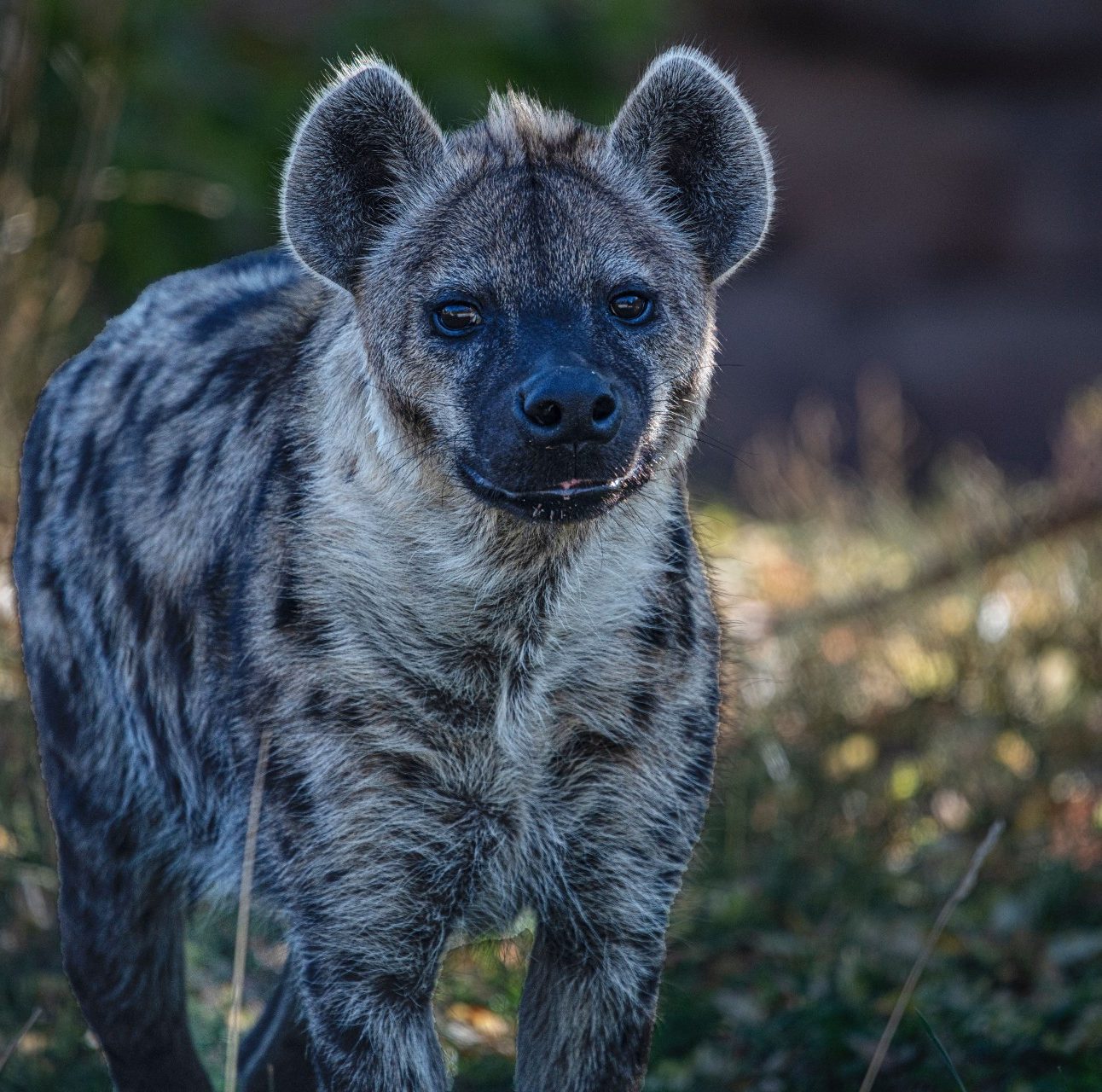
Although spotted hyenas resemble dogs, they are more closely related to mongoose and meerkats.
Spotted hyenas have a short torso with lower hind quarters, making their backs slope noticeably downward – this prevents attackers from being able to get a firm grip. Their coat is short, and sandy to grey/brown with black spots. The hair on their neck and back is slightly longer and able to stand on end when the hyena becomes excited.
Spotted hyenas are the largest of the four living hyena species. Male and female spotted hyenas look similar, but females are heavier than the males. Females have external genitals that can be confused with a penis – this unique feature is thought to provide advantages in terms of survival and dominance.
Spotted hyenas are found in a variety in Sub-Saharan Africa, in habitats including grasslands, savannah, woodland and sub-deserts, but are also found near human settlements. They have even been found in mountainous areas!
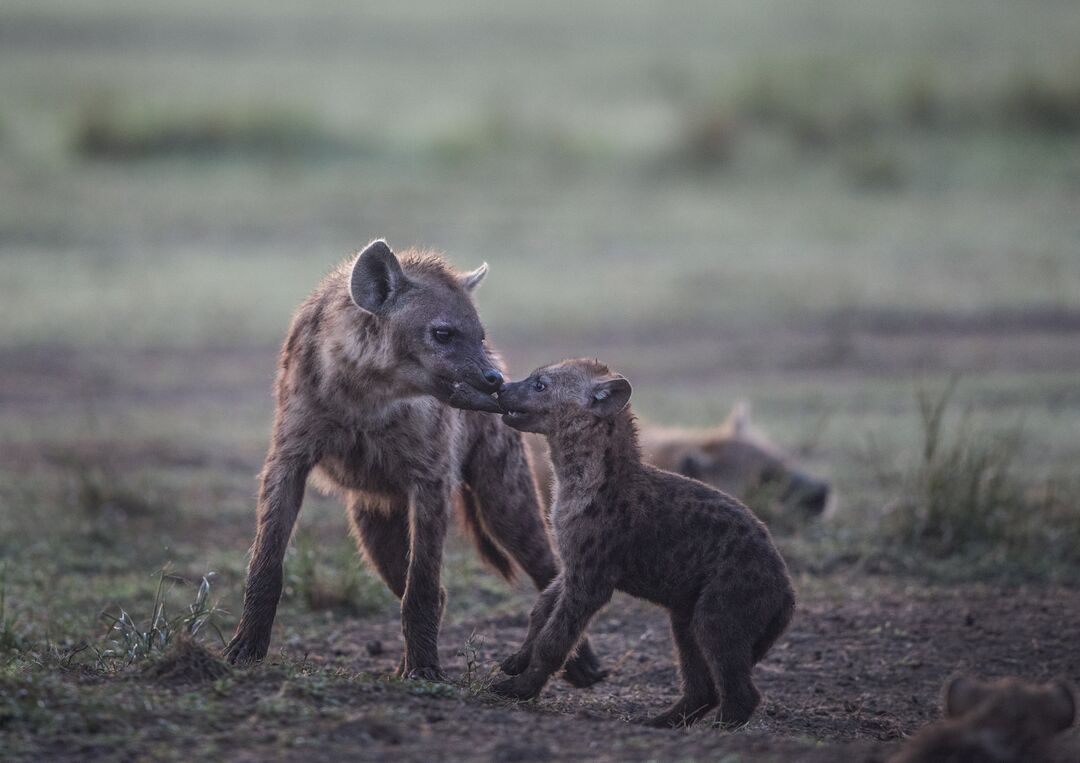
Hyenas in the wild © George Logan
Spotted hyenas are mostly nocturnal, resting for long period during the day, and hunting at night and travelling long distances to get food and water. They are skilled hunters and can easily take down wildebeest or antelope, but they tend to be associated more with their ability as scavengers.
Spotted hyenas are very vocal and make a variety of different sounds to communicate with each other, most famously their cackling laugh which can be heard by other hyenas from three miles away. Spotted hyenas may vocalise during feeding, or to greet each other, display aggression, communicate between clans, and identify themselves.
Hyenas live in groups called clans, with up to 90 individuals, organised in matriarchal and patriarchal hierarchies, and led by a dominant female. They share a communal den and can have a home range varying from 15 and 400 square miles, although not all clans defend a specific territory. Spotted hyenas sometimes take advantage of the natural migratory pattens of herbivores and following them for prey.
Female spotted hyenas’ reproductive success is determined by their social status, with the dominant females having the most offspring. Females usually give birth to two cubs – when they are two to six weeks old the mother will move them to a communal den with other females and their cubs.
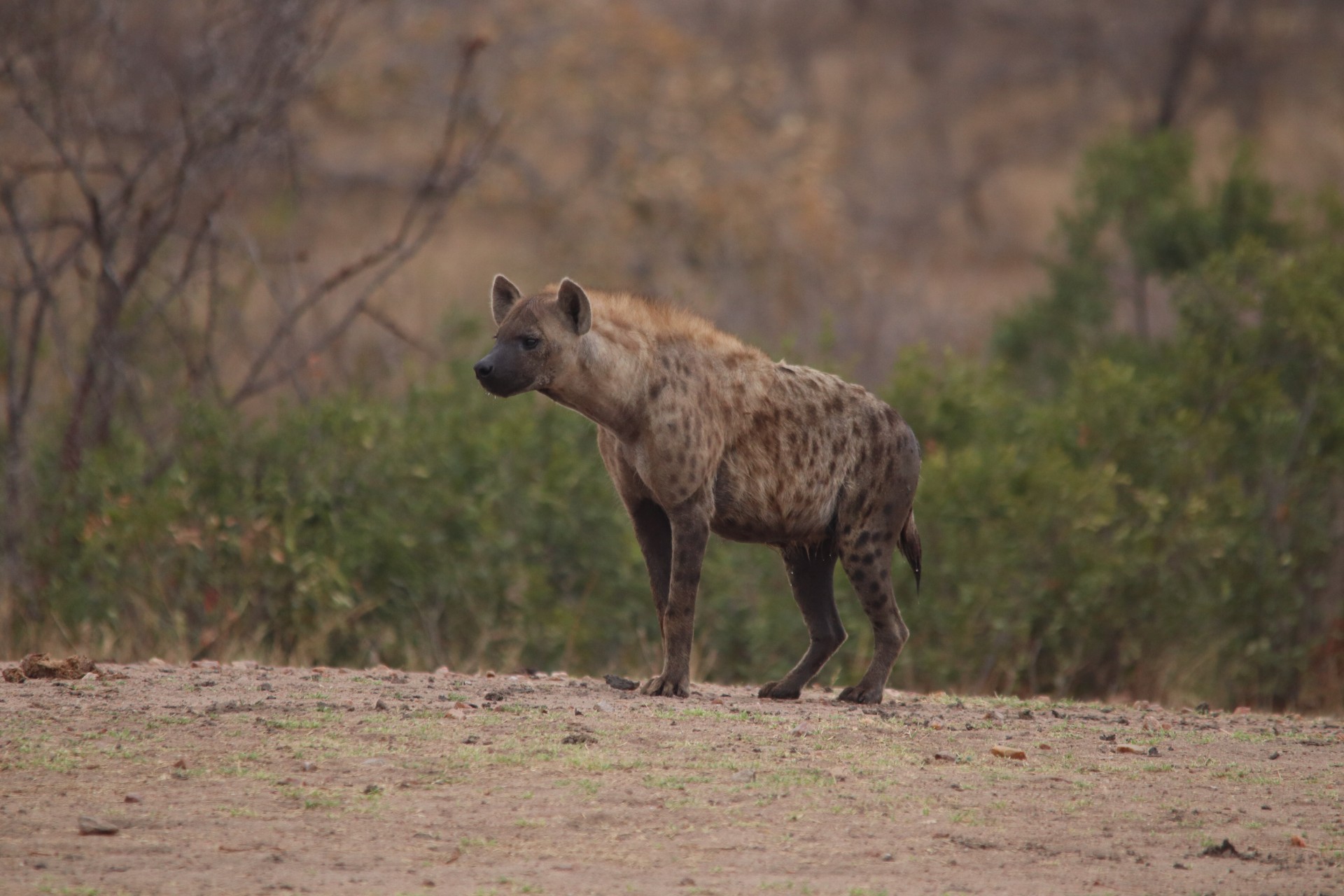
A hyena in the wild © James Botes, Unsplash
Spotted hyena populations in eastern, central and western Africa are believed to be decreasing. Attacks by humans appear to be the key factor in this decline.
Spotted hyenas come into conflict with humans when they prey on domestic livestock. This hunting of livestock reduces the willingness of communities to live alongside the animals, making them targets for persecution.
In some areas hyena’s historical association with witchcraft and the supernatural, through legend and folklore, is also a contributing factor to their decline. Populations of spotted hyenas are often shot, speared, trapped or poisoned.
